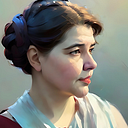Member-only story
From shadows in the cave to 3D reality
Our ability to understand our universe is constantly frustrated by our inability to get a different perspective on the 3D structures that litter the sky. If you are lucky enough to live in the Southern Hemisphere, a peek into a telescope at the Tarantula Nebula reveals clouds of gas, dust, and starlight that are arranged just right to trick the mind into seeing a spider’s face. This is just a fancy game of shadows, however, and the actual structure of the clouds, if we could build them from clay, look nothing like the creepy crawlies that cause so many people to look away.
This lack of being able to readily see in 3D means that when astronomers look at objects like California Cloud and Orion A Cloud, we see similar-looking silhouettes. We also see very different amounts of star formation. This dichotomy of similar-looking clouds doing very different things has led folks to ask “Why?”
Honestly, part of what makes scientists successful is that their internal dialogue sounds a lot like a 2-year-old who just keeps asking “But why?”
Unlike your standard 2-year-old, astronomers recognize they have to find answers for themselves, and with enough technology, they do.
For this particular “But why don’t they form stars the same?” question, researchers led by Sara Rezaei combined stellar locations from the Gaia…
